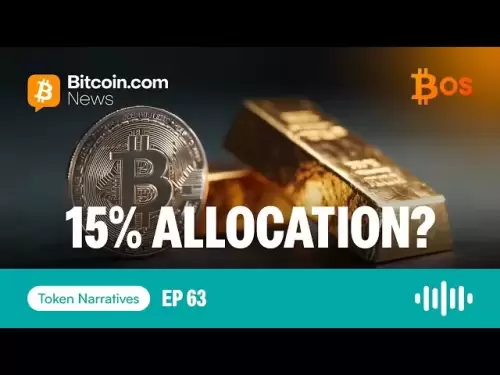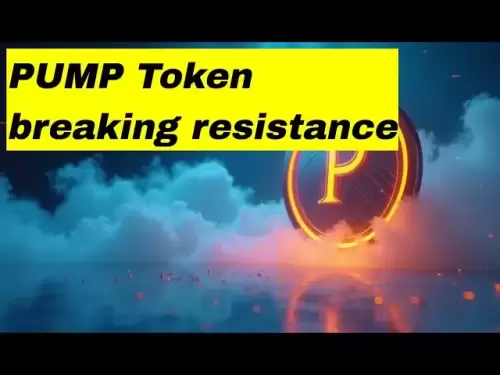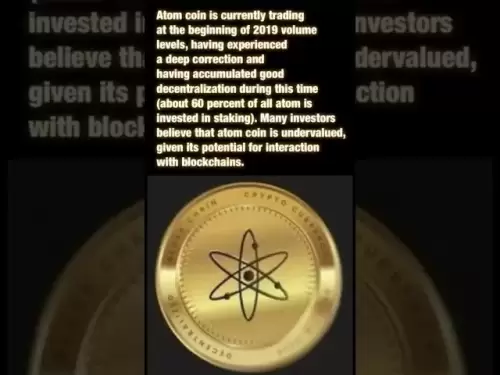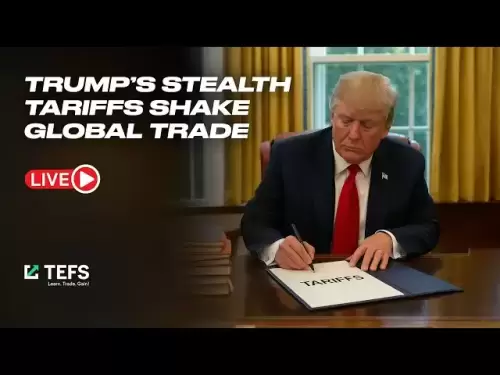-
 Bitcoin
Bitcoin $115200
-2.68% -
 Ethereum
Ethereum $3601
-5.16% -
 XRP
XRP $3.035
-2.96% -
 Tether USDt
Tether USDt $0.9997
-0.04% -
 BNB
BNB $764.5
-5.43% -
 Solana
Solana $168.1
-5.92% -
 USDC
USDC $0.9998
-0.02% -
 Dogecoin
Dogecoin $0.2090
-4.80% -
 TRON
TRON $0.3272
-0.49% -
 Cardano
Cardano $0.7306
-5.00% -
 Hyperliquid
Hyperliquid $39.16
-12.22% -
 Stellar
Stellar $0.3967
-4.96% -
 Sui
Sui $3.566
-5.95% -
 Chainlink
Chainlink $16.55
-6.57% -
 Bitcoin Cash
Bitcoin Cash $552.3
-3.90% -
 Hedera
Hedera $0.2516
-4.69% -
 Avalanche
Avalanche $21.99
-5.75% -
 Toncoin
Toncoin $3.621
-0.28% -
 Ethena USDe
Ethena USDe $1.000
-0.03% -
 UNUS SED LEO
UNUS SED LEO $8.951
0.02% -
 Litecoin
Litecoin $105.9
-3.59% -
 Shiba Inu
Shiba Inu $0.00001232
-5.00% -
 Polkadot
Polkadot $3.640
-5.55% -
 Uniswap
Uniswap $9.048
-7.03% -
 Monero
Monero $301.8
-1.51% -
 Dai
Dai $0.9999
-0.01% -
 Bitget Token
Bitget Token $4.334
-3.66% -
 Pepe
Pepe $0.00001064
-6.17% -
 Cronos
Cronos $0.1367
-5.78% -
 Aave
Aave $259.2
-4.59%
Binance Futures Index Price: The Principle of Avoiding Pins
Binance Futures Index Price ensures fair trading by aggregating data from major exchanges, preventing manipulation and reducing unfair liquidations.
Jun 10, 2025 at 11:28 am
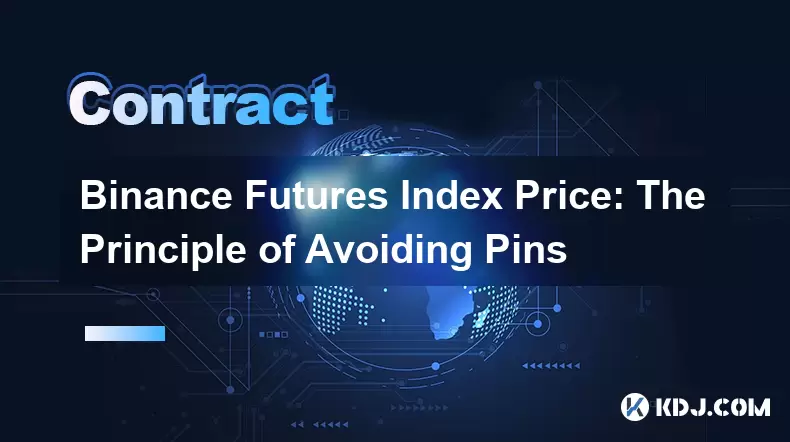
What is the Binance Futures Index Price?
The Binance Futures Index Price serves as a critical mechanism for ensuring fair and accurate pricing across futures contracts on the Binance platform. It aggregates data from multiple spot exchanges to calculate a robust, representative price that reduces the impact of short-term volatility or manipulation. This index price plays a central role in functions like liquidation calculations, mark price, and funding rate mechanisms.
Unlike the mark price, which reflects the current market sentiment, the index price ensures traders are not unfairly liquidated due to sudden price spikes or wash trading on individual exchanges. By averaging prices from major exchanges such as Huobi, OKX, and Coinbase, Binance creates a more stable reference point that aligns with broader market conditions.
Understanding Pinning in Futures Markets
Pinning refers to a phenomenon where the price of an asset gravitates toward a specific strike price or round number just before contract expiration. In traditional options markets, pinning often results from hedging behavior by market makers. In crypto futures, pinning can lead to abrupt and artificial price movements, especially around funding settlement times or during volatile market conditions.
Traders who exploit this behavior may attempt to push the price closer to certain levels to trigger liquidations or manipulate funding rates. The index price mechanism aims to mitigate these risks by providing a neutral valuation source that cannot be easily influenced by manipulative practices on a single exchange.
The Role of Index Price in Avoiding Manipulation
To prevent malicious actors from distorting the futures market, Binance employs the index price system to decouple the mark price from potential manipulation. Here’s how it works:
- Multi-source aggregation: The index pulls real-time data from several reputable exchanges.
- Weighted average calculation: Each exchange's contribution is weighted based on its liquidity and reliability.
- Outlier filtering: Extreme prices from low-liquidity or suspicious exchanges are filtered out to maintain accuracy.
By relying on this diversified and transparent model, Binance ensures that no single entity can control or significantly influence the index price. As a result, traders benefit from a more predictable and fair environment, especially during high-volatility periods.
How Does Index Price Affect Liquidation?
Liquidation in futures trading occurs when a trader's position is forcibly closed due to insufficient margin. On Binance Futures, liquidation engines use the mark price, which itself is derived from the index price and the latest bid/ask spread. This layered approach prevents scenarios where a temporary price spike on one exchange leads to unnecessary liquidations.
Here’s how the process unfolds:
- If the mark price diverges significantly from the index price, the system recalibrates to ensure alignment.
- Liquidation thresholds are calculated using this adjusted mark price.
- Positions are only closed if they breach the adjusted maintenance margin requirements.
This method ensures that traders are not prematurely liquidated due to transient market anomalies, offering a safer trading experience even in turbulent markets.
Practical Implications for Traders Using Index Price
For active futures traders, understanding how the index price behaves is essential for risk management and strategy execution. Here are some key considerations:
- Monitor divergence between mark price and index price: Significant deviations may indicate upcoming volatility or imbalance in order books.
- Use index price for stop-loss placement: Since liquidations rely heavily on mark price (which is linked to index), setting stops relative to index levels can improve trade safety.
- Be cautious during funding settlements: Around 00:00 UTC, funding rates are calculated based on the index price, making it a sensitive period for leveraged positions.
Additionally, traders should familiarize themselves with the exchanges contributing to the index. For example, if Bitcoin’s index price includes Coinbase and Kraken, any divergence between those platforms and others may temporarily affect the overall index level.
How to Access and Interpret the Index Price on Binance
Binance provides real-time access to the index price directly on the futures trading interface. To locate and analyze it effectively:
- Navigate to the futures trading pair of interest (e.g., BTCUSDT).
- Look for the "Index Price" box, usually located near the order book or chart section.
- Compare the index price with the mark price and last traded price to gauge market health.
Traders can also hover over or click the index price display to see the component exchanges and their respective weights. This transparency allows users to understand the underlying dynamics influencing the index.
Moreover, Binance offers API endpoints that provide index price data programmatically. These can be integrated into trading bots or monitoring tools for advanced users seeking automation or deeper analysis.
Frequently Asked Questions
Q1: Can the index price ever be the same as the spot price?
Yes, under normal market conditions and when there is strong consensus among contributing exchanges, the index price can closely match the spot price on major platforms.
Q2: Is the index price updated in real time?
Yes, the index price is refreshed frequently—typically every few seconds—to reflect the most current data from contributing exchanges.
Q3: Why does Binance exclude certain exchanges from the index calculation?
Exchanges with low liquidity, irregular trading patterns, or suspected manipulation are excluded to preserve the integrity and reliability of the index price.
Q4: How does the index price affect funding rates?
Funding rates are calculated based on the difference between the mark price (derived from the index) and the perpetual contract price. If the contract trades consistently above or below the index, funding rates adjust to encourage convergence.
Disclaimer:info@kdj.com
The information provided is not trading advice. kdj.com does not assume any responsibility for any investments made based on the information provided in this article. Cryptocurrencies are highly volatile and it is highly recommended that you invest with caution after thorough research!
If you believe that the content used on this website infringes your copyright, please contact us immediately (info@kdj.com) and we will delete it promptly.
- Litecoin Price Watch: UNIL Pump & Staking Success Steal the Show?
- 2025-08-02 02:50:12
- Bitcoin, Crypto, Gambling Sites: 2025's Hottest Trends and Where to Bet
- 2025-08-02 02:50:12
- FTX Token's Wild Ride: FTT Drop Amidst Creditor Repayment Buzz
- 2025-08-02 01:30:12
- Navigating the Crypto Market: Bitcoin, Trader Experience, and Avoiding the Noise
- 2025-08-02 00:50:12
- Deep Agents, AI Task Management, and Evolution AI: A New Era?
- 2025-08-02 00:50:12
- AAVE Price Under Pressure: Technical Indicators Point to Bearish Momentum
- 2025-08-02 02:10:12
Related knowledge

Why is my Bitstamp futures position being liquidated?
Jul 23,2025 at 11:08am
Understanding Futures Liquidation on BitstampFutures trading on Bitstamp involves borrowing funds to open leveraged positions, which amplifies both po...

How to report Bitstamp futures for taxes?
Jul 30,2025 at 08:35am
Understanding Bitstamp Futures and Taxable EventsWhen trading Bitstamp futures, it’s essential to recognize that these financial instruments are treat...

Does Bitstamp offer inverse contracts?
Jul 23,2025 at 01:28pm
Understanding Inverse Contracts in Cryptocurrency TradingIn the realm of cryptocurrency derivatives, inverse contracts are a specific type of futures ...

What is the difference between futures and perpetuals on Bitstamp?
Jul 27,2025 at 05:08am
Understanding Futures Contracts on BitstampFutures contracts on Bitstamp are financial derivatives that allow traders to speculate on the future price...

How to find your Bitstamp futures trade history?
Jul 23,2025 at 08:07am
Understanding Bitstamp and Futures Trading AvailabilityAs of the current state of Bitstamp’s service offerings, it is critical to clarify that Bitstam...

Can I use a trailing stop on Bitstamp futures?
Jul 23,2025 at 01:42pm
Understanding Trailing Stops in Cryptocurrency TradingA trailing stop is a dynamic type of stop-loss order that adjusts automatically as the price of ...

Why is my Bitstamp futures position being liquidated?
Jul 23,2025 at 11:08am
Understanding Futures Liquidation on BitstampFutures trading on Bitstamp involves borrowing funds to open leveraged positions, which amplifies both po...

How to report Bitstamp futures for taxes?
Jul 30,2025 at 08:35am
Understanding Bitstamp Futures and Taxable EventsWhen trading Bitstamp futures, it’s essential to recognize that these financial instruments are treat...

Does Bitstamp offer inverse contracts?
Jul 23,2025 at 01:28pm
Understanding Inverse Contracts in Cryptocurrency TradingIn the realm of cryptocurrency derivatives, inverse contracts are a specific type of futures ...

What is the difference between futures and perpetuals on Bitstamp?
Jul 27,2025 at 05:08am
Understanding Futures Contracts on BitstampFutures contracts on Bitstamp are financial derivatives that allow traders to speculate on the future price...

How to find your Bitstamp futures trade history?
Jul 23,2025 at 08:07am
Understanding Bitstamp and Futures Trading AvailabilityAs of the current state of Bitstamp’s service offerings, it is critical to clarify that Bitstam...

Can I use a trailing stop on Bitstamp futures?
Jul 23,2025 at 01:42pm
Understanding Trailing Stops in Cryptocurrency TradingA trailing stop is a dynamic type of stop-loss order that adjusts automatically as the price of ...
See all articles





















